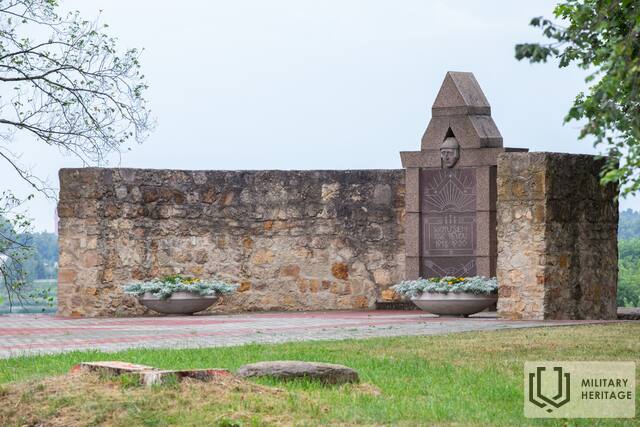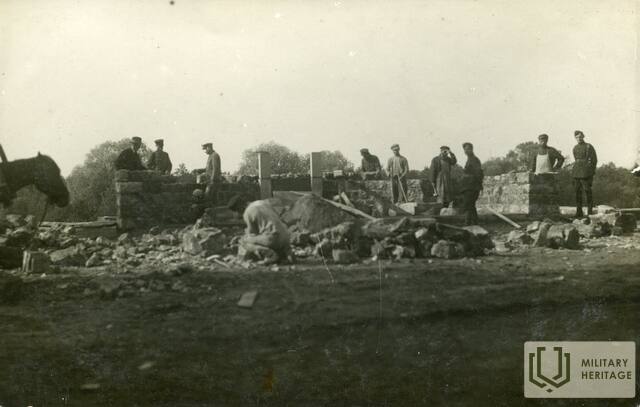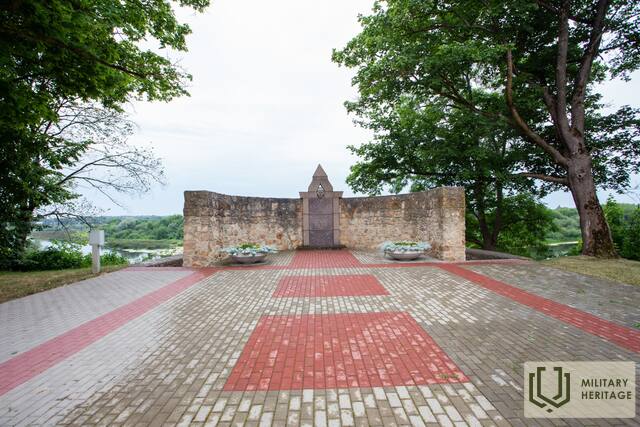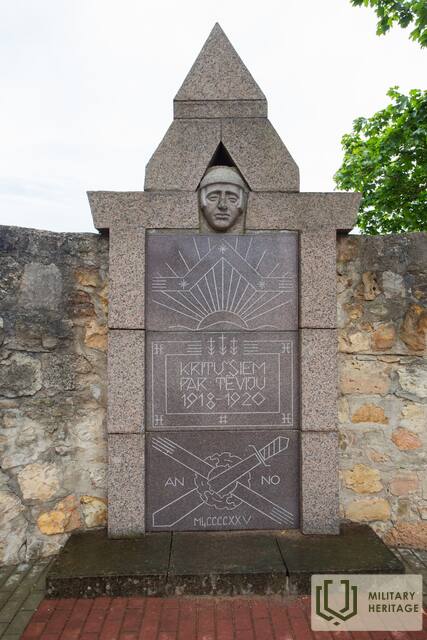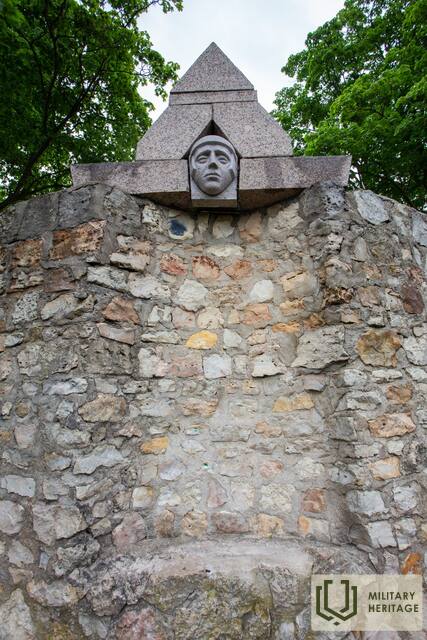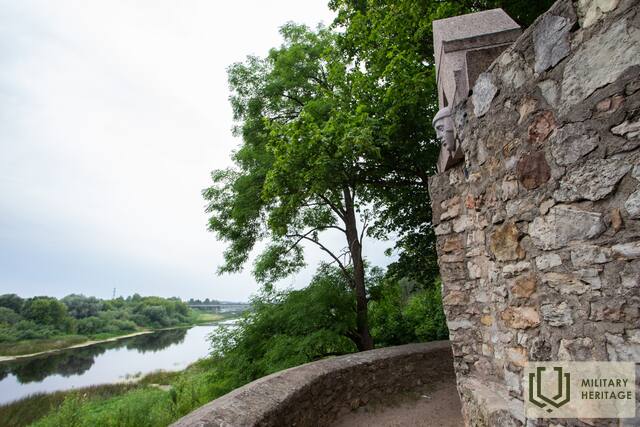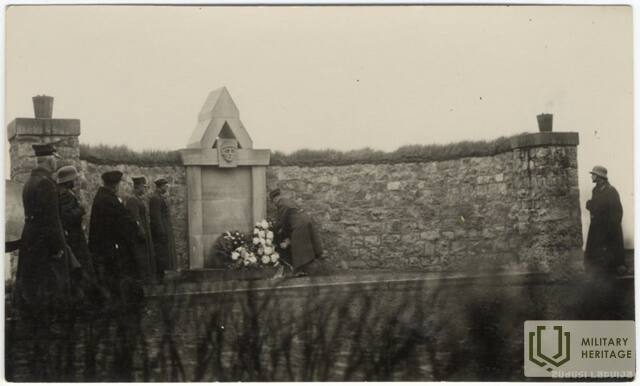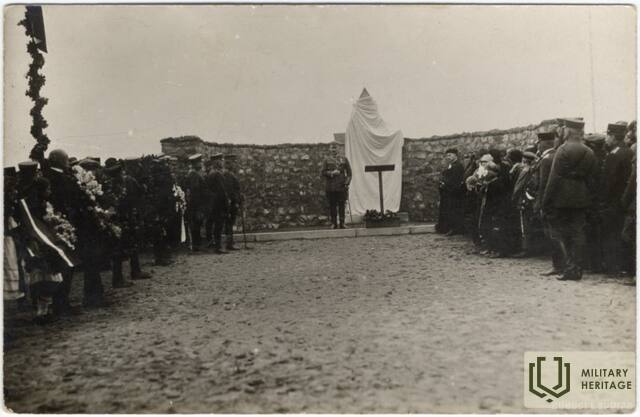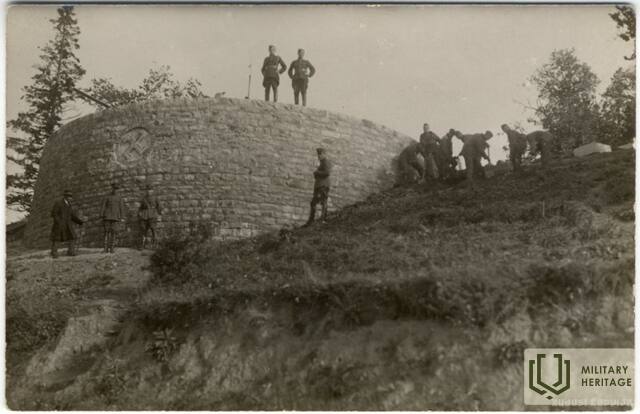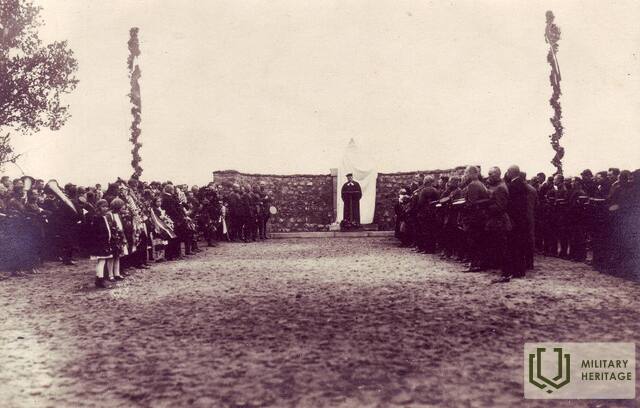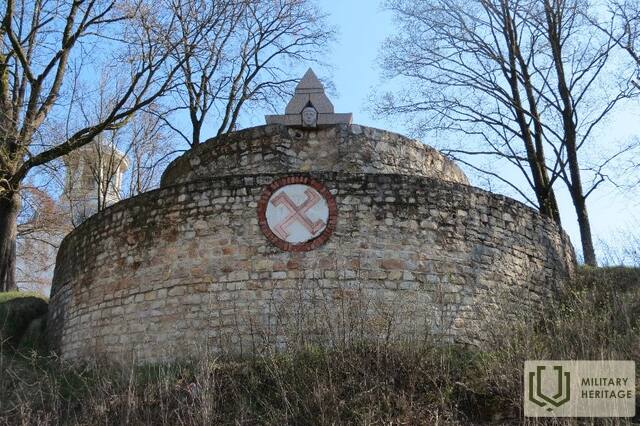Monument to those who fell for the Fatherland in 1918-1920.
Memorial site

Located on the side of Rīgas Street, opposite Krustpils Castle.
In Jēkabpils, on the right bank of the Daugava River, the monument “To Those Who Fell for the Fatherland 1918–1920” was erected, a proposal to erect a monument to soldiers who fell in the War of Independence was made by the Krustpils branch of the Latvian Brothers’ Cemetery Committee on June 12, 1923. For the creation of the monument, the Krustpils parish board transferred to the Brothers’ Cemetery Committee on November 12, 1923 a stone part of the monument to Tsar Alexander II near the parish board building, where the monument had been erected in honor of the abolition of serfdom. The Latvian Ministry of the Interior allowed the Krustpils branch of the Brothers’ Cemetery Committee to collect donations. A total of 2,400 lats were donated, 1,200 were missing. They hoped to get them from the bazaar and social evening organized on the day of the monument’s opening.
The project of the monument was entrusted to the architect Aleksandrs Birznieks. The architect's plans were to create a monument from local material - dolomite studs. The volume of the monument was formed by two concentric, massive semicircles of dolomite stud masonry, of which the outer one was lower on the Daugava side, cut into the bank and formed a terrace. In its center was a red brick fire cross. In the center of the main semicircle, as an altar, granite slabs with the text: "To those who fell for the Fatherland 1918 - 1920" and depicting a rising sun over the waves of the Daugava, and framed by Latvian signs, were built. The central part of the monument was formed by the mask of a fallen soldier, sculpted by sculptor V. Treijs. The acting commander of the Latgale Artillery Regiment, Lieutenant Colonel Jākobsons, allowed the use of a square on the right bank of the Daugava opposite Krustpils Castle for the construction of the monument, with the condition that the square remain the property of the Latgale Artillery Regiment.
In 1925, the Krustpils branch of the Latvian Brethren Cemetery Committee concluded an agreement with businessman V. Treija from Riga for the construction of a monument in Krustpils. On July 26, 1925, the foundation of the monument was laid. September 27, 1925 is a holy day for the people of Krustpils. The monument was unveiled with its consecration, performed by the Lutheran pastor of the Krustpils parish, K. Skujiņš. The Minister of War, R. Bangerskis, the commander of the Latgale Artillery Regiment, Colonel Kire, General K. Berķis, etc. participated. 11 cubic limestone studs, which were broken near Asote, were used for the construction of the monument.
In the 1950s, the monument “To Those Who Fell for the Fatherland 1918 – 1920” was partially destroyed – the upper part was demolished – the mask of ancient Latvian soldiers, the inscriptions were smeared, the fire cross sign was destroyed. In turn, already at the beginning of the Third Awakening, activists of the Krustpils branch of the Latvian Popular Front (LTF) included in the resolution at the first LTF district conferences a demand to restore the monument in Krustpils. Already on November 11, 1989, at the place where the monument was located, a moment of remembrance was held, in which the people of Jēkabpils commemorated their Lāčplēšis.
In early 1992, restoration work on the monument began. Granite pieces of the required size and shape are being made at the Cēsis communal enterprise plant. The granite was processed according to the drawings by E. Nīmanis and V. Treikmanis. The technical supervision of the restoration of the monument is carried out by architect Māra Steķe. In Riga, sculptor Inta Berga cast the bronze parts of the monument. All works were financed from the financing of the city of Jēkabpils. The restored monument was consecrated by the then dean of the Jēkabpils and Krustpils Evangelical Lutheran parish, Modris Plāte, and the priest of the Jēkabpils Catholic parish, Jānis Bratuškins, on November 18, 1992.
It was opened in Krustpils on September 27, 1925. The monument was designed by architect Aleksandrs Birzenieks. The inscription "For those who fell even for the Fatherland 1918-1920" is engraved on the monument. The monument was partially demolished by the Soviet occupation authorities in 1941, and completely destroyed around 1950. The monument was restored on November 18, 1992.
Used sources and references:
Iluta Bērziņa, Chief Collection Keeper of the Jēkabpils History Museum




